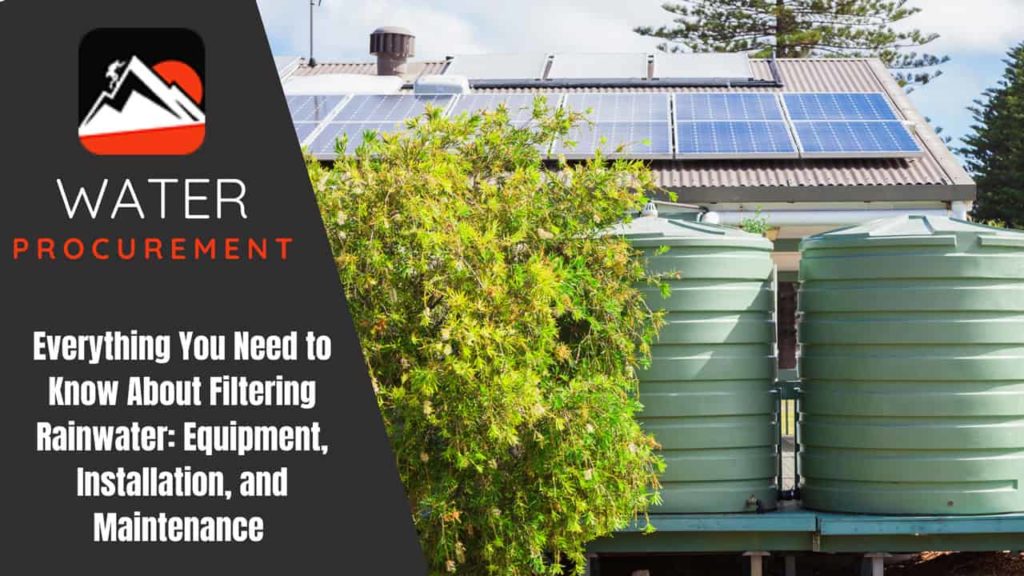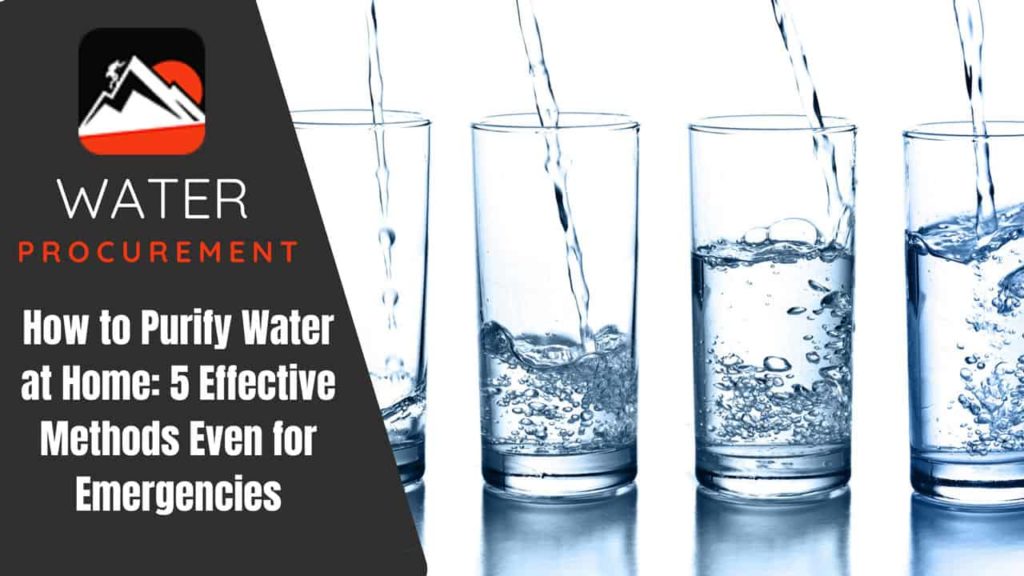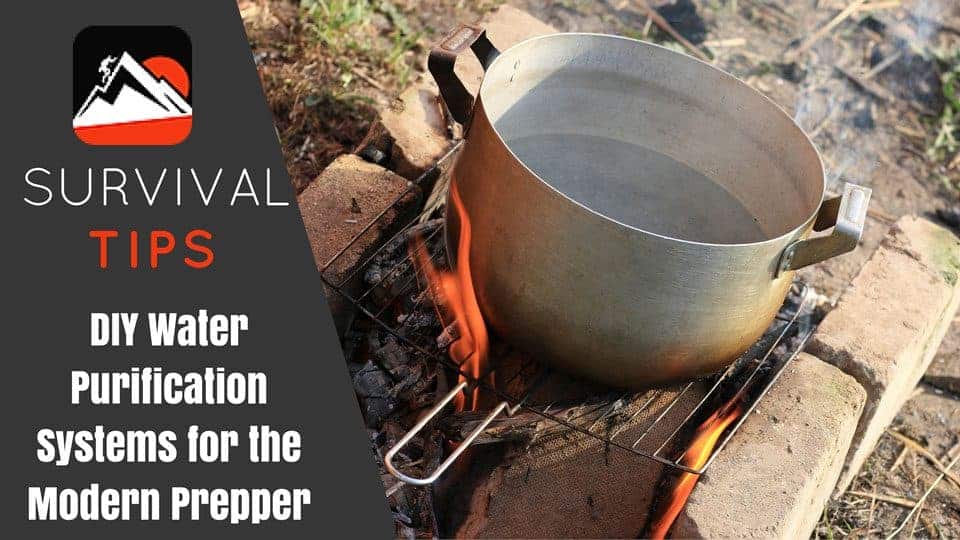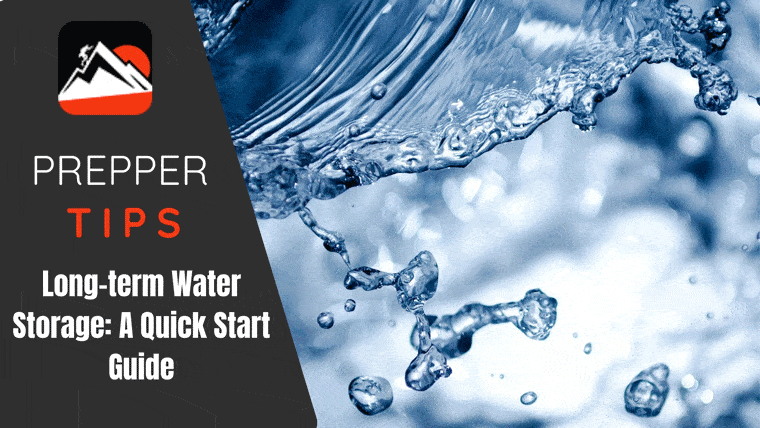Contents
If you’re looking for a water source that is both sustainable and environmentally friendly, collecting rainwater may be the perfect option for you! This blog post will discuss everything you need to know about setting up a rainwater collection system, from the different types of equipment available to how to filter rainwater. We’ll also provide some tips on how to get started. So whether you’re just starting or are already in the filtration process of setting up your system, this article provides you with all the information you need!
Why is finding a reliable way to collect rainwater essential?
The core aspect of surviving and thriving is water. You can live weeks without food, but only days without water. The Earth has an abundant supply of fresh water; however, getting access to clean and safe drinking water continues to be a challenge for many people worldwide. According to the World Health Organization, almost one billion people lack access to improved drinking water sources. In addition, more than two billion people use a drinking water source contaminated with feces.
Rainwater harvesting can help address these challenges by providing a more sustainable and reliable way to access clean drinking water in a survival situation.
What you need to collect rainwater
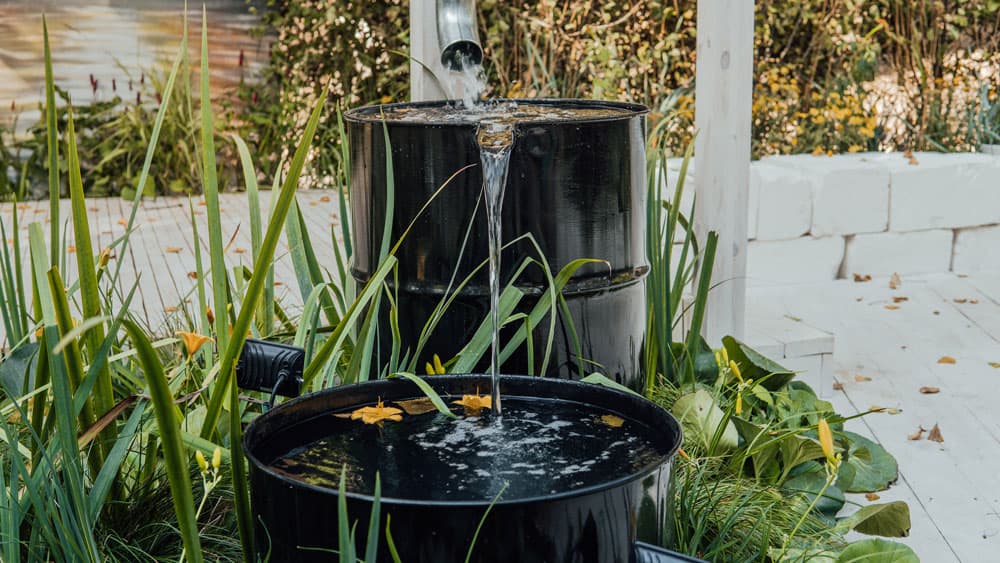
To prepare for a potential water shortage, you will need to collect rainwater. The good news is that collecting rainwater is a reasonably straightforward process, and you only need a few pieces of equipment to get started. Below are the most critical components:
You might also find interesting our article about rainwater harvesting for preppers.
Catchment area
Let’s begin with the most crucial part of your rainwater collection system. The catchment area is simply the surface area where the collection system will save the water. The larger the catchment area, the more water you will collect. Some common catchment areas include rooftops, balconies, and garden beds. It is essential to get creative and think of all surfaces that you can use to collect rainwater.
Storage tank
Once you have collected the water, you will need somewhere to store it. A water storage tank is an excellent option for this, as it can hold large amounts of water. Make sure to choose a tank made from food-grade materials (more on this later) and is certified to store drinking water. Some creative ways you can build a storage tank include using a 55-gallon drum, an old refrigerator, or a water butt.
Pump
To get the water from the catchment area to water storage tank, you will need a pump. There are many different types of pumps available, so make sure to choose one suited for your needs. When in a survival situation, you can find a manual pump that doesn’t require electricity or use a local water source to power an electric pump. Some examples of DIY pumps could be a siphon pump or a bucket chain pump.
Filtering equipment
Once the water has been collected and stored in a water tank, you will need to rainwater filtration system and included uv light it before drinking. There are many different filtering options available, so choose the one that is best suited for your needs. Some ordinary filters include activated carbon, ceramic, and reverse osmosis systems. If you lack these resources, continue reading to cover this in more detail.
How to install a rainwater collection system
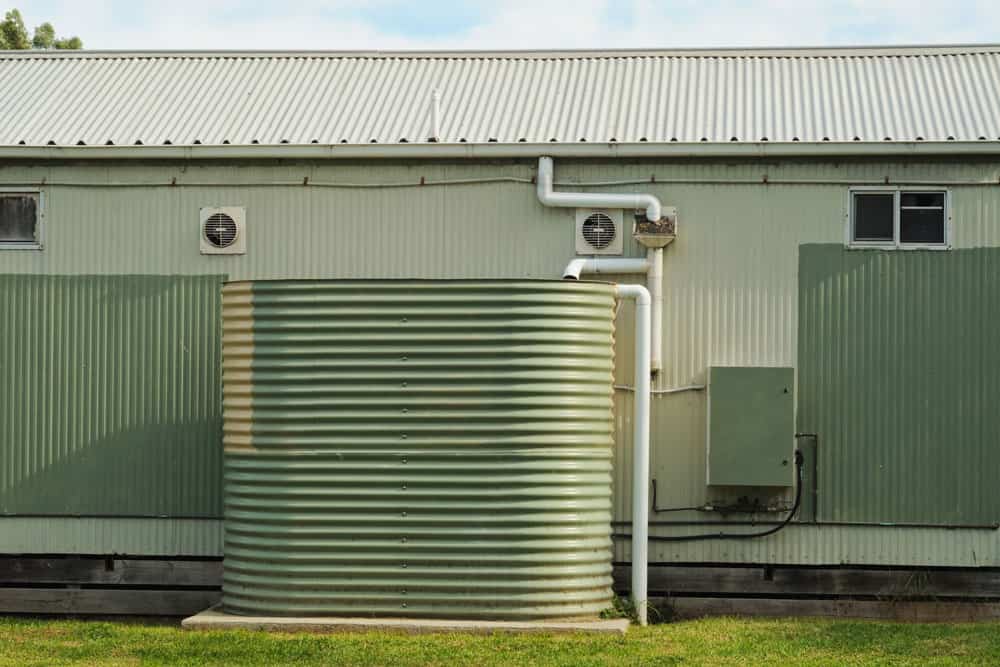
Now that you know what equipment you will need, let’s look at installing it even if you lack resources in a survival situation. Of course, the installation process will vary depending on the equipment you are using, but we will provide an overview of the general steps below.
We also recommend reading our article about rain barrel mistakes to avoid.
Catchment area
The first step is to determine where your catchment area will be. This can be either a rooftop, balcony, or garden bed. Once you have chosen the location, mark out the site and make sure it is clear of any obstructions. Be sure to lay down a tarp or some other type of waterproof material to prevent the water from seeping through the surface and into your home or office.
Storage tank
The next step is to install the storage tank. If you use a 55-gallon drum or an old refrigerator, place them in your designated catchment area and connect the tubing. The best way to connect the tubing is to use a T-fitting. If you are using a water butt, you will need to attach it to a downpipe or place it in an area that will collect the most rainfall; this could be under a roof if you lack piping. Finally, if you are using a rain barrel to collect your rainwater, you will need to install a screened overflow valve at the top of the barrel. This valve is essential as it will keep mosquitoes and other pests out of the barrel while allowing excess water to flow freely. The easiest way to install the screened overflow valve is to use the gutter downspout already attached to your home. Just remove the existing downspout and replace it with the screened overflow valve.
Pump
You can install the pump in one of two ways: either above ground or below ground. If you are installing it above ground, make sure to place it near the catchment area and run the tubing to the water tank. If installing it below ground, bury it near the tank and run the tubing to the surface. To keep this in place, use some cement or mortar. If you don’t have access to either of these, you can create a makeshift support system using sticks, rocks, or logs.
Filtering equipment
You can install the filtering equipment in various ways. We will cover the most common methods below. If you use an activated carbon filter, install it between the water tank and the faucet. If you use a ceramic filter, install it after the pump and before the tap. Finally, install the filter in line with the pump if you use a reverse osmosis system.
The best way to filter water
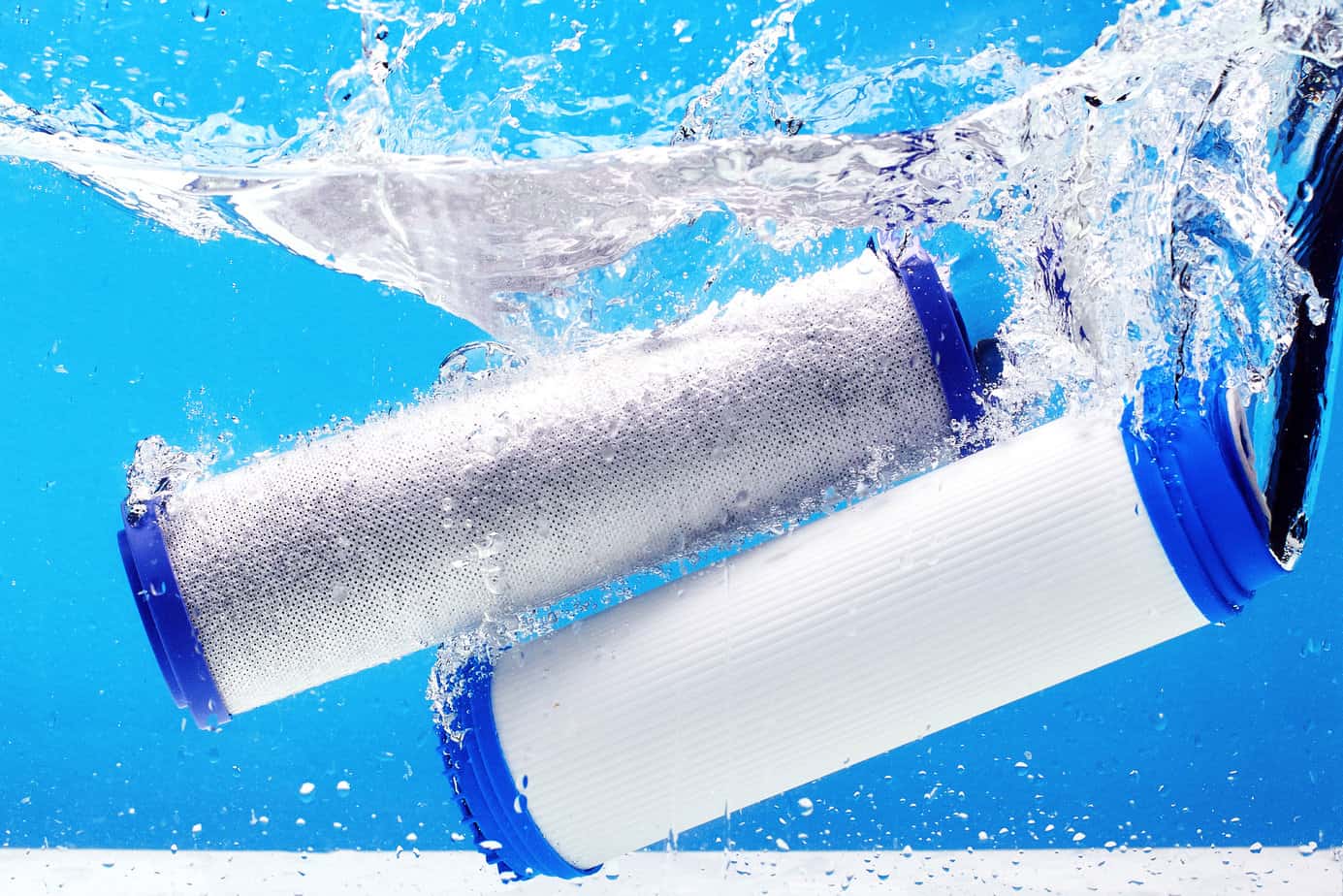
Filtering water is the most critical step to ensure that the water is safe to drink. Many people in survival situations try to make their filters using readily available materials, such as sand, charcoal, and cloth. If you have access to these resources, then we suggest trying one of the following methods:
Sand filter: You can make this simple filter using a container, sand, and gravel. Pour the water into the top of the container; this will collect the dirty water from the bottom. To create the sand filter, fill the container with a layer of sand, then add a layer of gravel. Repeat this process until the container is full.
Charcoal filter: This is a more complicated filter that uses a metal bucket, activated charcoal, and sand. The water is poured into the top of the bucket, and the dirty water is collected from the bottom. The best way to make this filter is to create a cone-shaped wick using activated charcoal and sand. The wick should be about two inches wide and six inches tall. First, fill the metal bucket with water and place the wick in the center of the bucket. Next, cover the top of the bucket with a piece of cloth secured with a rubber band. Finally, place the activated charcoal on top of the fabric.
Cloth filter: This is an effortless filter that you can make using any cloth, such as a T-shirt or a bandanna. The water is poured into the center of the fabric, and the dirty water is collected from the edges. To make this filter, fold the cloth in half to form a square. Next, wet the cloth and wring out any excess water. Next, place the filter in the catchment area and pour the water into the center of the fabric. The more water you can flow through the filter at once, the better. Let the water sit for a few minutes so that the dirt and sediment can settle to the bottom. Then, collect the clean water from the top of the cloth.
Reusable filters: There are also several reusable filters on the market that you can use in conjunction with your rainwater harvesting system. These filters range in price and quality, so make sure to do your research before purchasing one. Reusable rates often come with a ceramic filter, one of the best filters for removing bacteria, harmful chemicals and parasites. Some reusable filters that seem to have worked great are the Big Berkey and the AquaRain.
The best way to filter water is by using different filters, giving you the best possible results and ensuring that your water is safe to drink. Suppose you have the benefit of having time to prepare your water filter. In that case, common combinations include activated carbon followed by a ceramic filter or reverse osmosis followed by an activated carbon filter.
Maintenance and upkeep of your rainwater harvesting system
Putting together your rainwater harvesting system is just the first step. Once it is up and running, you will need to maintain it regularly to function properly. The following are some tips for keeping your system:
- Clean the gutters and downspouts regularly to prevent debris from clogging the system
- Inspect the tank and filter regularly to make sure they are functioning properly
- Flush the water tank and filters every few months to remove any sediment or dirt that has built up
- Add a chlorine tablet to the water storage tank once a month to help kill bacteria and parasites
- Keep the catchment area free of debris and leaves
By following these simple tips, you can ensure that your rainwater harvesting system will provide you with safe, clean water for years to come.
Tips for using collected rainwater
Once you have collected rainwater, there are many ways you can increase the amount of rainwater you can catch rather than just relying on your system. Some are:
- Set up plastic pots under the eaves of your house to collect the water that runs off the roof
- Use a rain barrel to store rainwater from your gutters, then filter it
- Install a cistern to store large amounts of rainwater
- Collect rainwater that falls off plants by using a water catcher
There are some ways to collect rainwater, and each one has its benefits. By combining different methods, you can maximize your collection potential and ensure that you have plenty of water for all your needs.
FAQs about collecting rainwater
How much water can you store?
The amount of water you can store will depend on the size of your tank or cistern. Companies design most systems to hold between 500 and 1000 liters of water.
Can I use collected rainwater for my garden?
Yes, you can use collected rainwater for your garden; in fact, it is a great way to conserve water.
How do you know if you have filtered your water correctly?
There is no definitive answer to this question. Some people prefer to use a water testing kit to check for harmful bacteria and parasites, while others rely on their senses (taste, smell, etc.) to determine if the filters have cleaned the water correctly. For example, unfiltered water tastes and smells more earthy than filtered water.
Is it necessary to filter rainwater before using it for drinking?
Yes always! Rainwater can contain bacteria and parasites that can make you sick, so it is important to filter it before drinking. There are many different filters available, so choose the one that best suits your needs.
Is it necessary to chlorinate rainwater?
No, but adding a chlorine tablet once a month will help kill any bacteria or parasites present in the water.
How often do I need to clean my gutters and downspouts?
To prevent debris from clogging the system, you should regularly clean your gutters and downspouts (at least once a year).
What should I do if my tank or filter becomes clogged?
If your tank or filter becomes clogged, you need to clean it out using a hose. Be sure to flush the tank and filters regularly to prevent any build-up of sediment or dirt.
Final thoughts
Collecting rainwater can help you survive emergencies. For example, if the water supply is cut off or a natural disaster happens and your pipes break, then having an ample amount of clean drinking water on hand will be vital to ensuring your family’s safety. By following this guide, you will give yourself the peace of mind that comes with knowing you have a reliable source of drinking water, no matter what happens.

